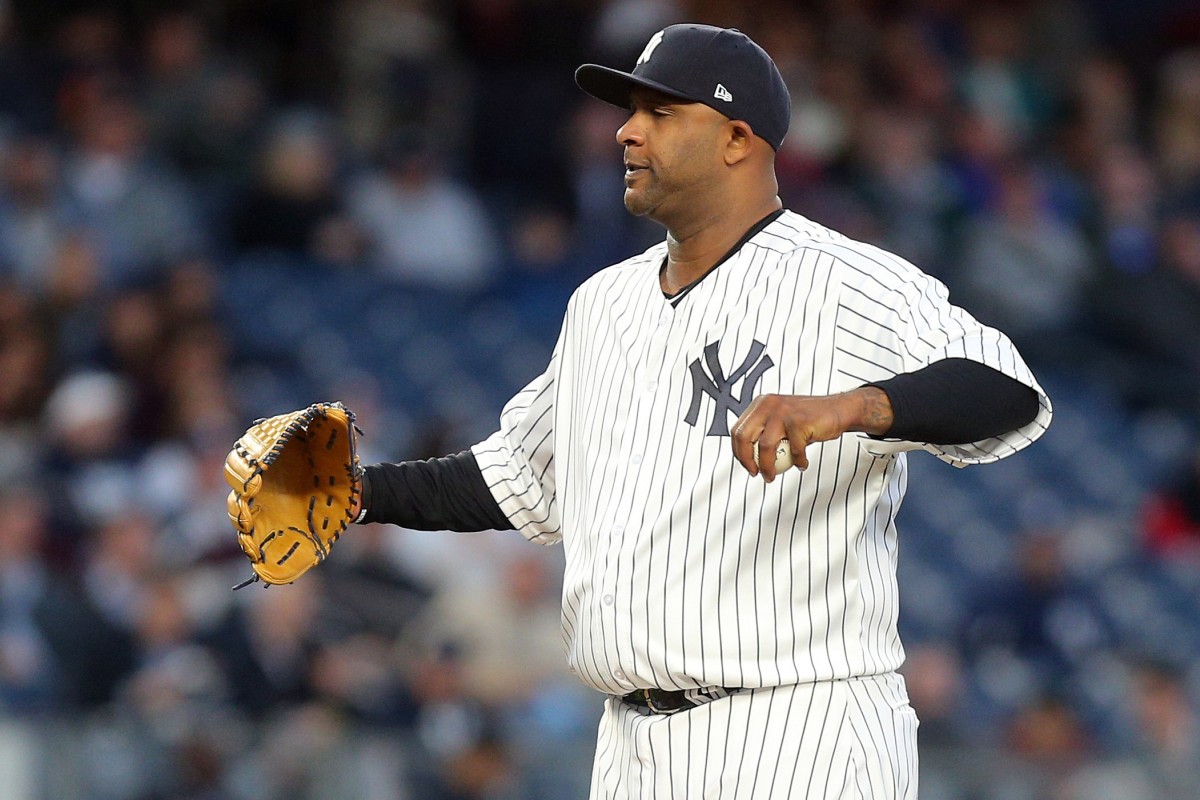The Yankees have four bonafide major league starting pitchers and at least one more to be determined. So naturally, during the winter meetings, the team has been connected to a handful of other pitchers that could round out the rotation. Many of us assumed, including yours truly, that CC Sabathia would eventually return to solidify the rotation. However, there’s been some doubt cast upon that notion. The veteran lefty is weighing his options, and so are the Yankees. In recent days, the team has been connected to Patrick Corbin, Gerrit Cole, Michael Fulmer, and Chris Archer on the trade front.
The Yankees don’t need to move quickly in order to resolve the rotation opening, and general manager Brian Cashman could continue to bide his time over the next few weeks. Why? His fallback option, Sabathia, has made it clear that his preference is to remain in the Bronx, which gives the Yankees plenty of leverage. The front office can now diligently scan the market for not only who could be preferable to Sabathia in 2018, but also who could be a long-term solution. If that search falls through, Sabathia should be waiting. Hence, the rumors regarding the Yankees and Corbin, Cole, Fulmer, and Archer. That isn’t to say Sabathia will wait around forever, as at some point an ultimatum would be expected. Perhaps we’re inching closer to that point knowing that Sabathia has had contact with other clubs, but it’s still early in the offseason.
Even if Sabathia didn’t make it so clear that he wanted to don the pinstripes again in 2018, there are a multitude of reasons for the Yankees to look elsewhere first. First and foremost, for as effective as Sabathia has been in his age 36 and 37 seasons (3.81 ERA and 116 ERA+ in 328.1 IP), it’s fair to question his performance’s sustainability. There just aren’t that many pitchers that thrive at this stage of their careers, so it’s no wonder that all of the trade targets mentioned earlier are 29 and younger. Yes, Sabathia has held up well over the past couple of seasons, but this could be a case where it’s better to part ways a year too soon rather than a season too late.
Durability must be a concern too. It’s not often if ever, a team hastily re-signs a pitcher with Sabathia’s mileage. Sabathia tossed a respectable 179.2 innings in 2016, but dropped to 148.2 frames in 2017, easily the lowest of his career aside from his injury-plagued 2014. At his age, it’s hard to imagine Sabathia reverting to his pre-2017 workload going forward. The likelihood of a pitcher younger than 30, as all of the other potential additions mentioned above are, managing a full season’s innings count is substantially higher than Sabathia’s odds.
Further, the luxury tax has been the crux of this offseason, and Sabathia’s free agency is one piece of the puzzle. Sabathia could earn up to $15 million on a one-year deal, which would eat up much of the roughly $30 million cushion remaining. He wouldn’t break the bank, as there would still be some wiggle room, but alternatives like Fulmer and Archer are more budget-friendly. Fulmer will make nearly the league minimum in 2018, while Archer is in the midst of a team-friendly contract that would only result in a $4.25M hit to the luxury tax payroll computation. Corbin and Cole are cost conscious options too, albeit a pushing $8M to 9M in arbitration forecasts. In other words, it’ll be much more difficult to obtain a suitable second and/or third baseman in conjunction with Sabathia compared to the other options noted.
There’s a lot to consider quantitatively, from statistics to payroll implications, but there’s more to the Sabathia dilemma than that. His sentimental value simply cannot be ignored. He’s a leader in the clubhouse, a fan favorite, and has been a franchise staple for the better part of a decade. That means a lot to many people, from teammates to fans. Yet, (almost) all of that has to go out the window from the front office’s perspective. The clubhouse aspect is important, as ruffling feathers internally would not be a good outcome, but fan sentiment and past history cannot solely dictate future contract terms. The Yankees are in the business of winning, thus finding a younger pitcher, preferably with multiple years of control, puts the Yankees in a far better position to win for years to come. Sabathia can certainly help the team win in 2018, but that’s likely it. Fans can and will move on from losing a favorite player and teammates will gravitate toward new leaders. This is a difficult part of a front office’s duties, but a necessary one.
All of the logic that the Yankees are applying while trying to improve the rotation doesn’t mean Sabathia won’t be back, of course. He’s just not priority number one, at least not at this time. Had he not cornered himself by stating his preference, perhaps Cashman wouldn’t be as comfortable letting the market unfold, though there were already reasons for the front office to hold off anyway. While it’s refreshing to hear Sabathia’s desire to remain with the Yankees, it’s reassuring that emotions don’t get in the way of sound decision making for the Yankees’ front office. That’s why a plebeian like me writes about baseball and doesn’t negotiate contracts because I would have re-upped Sabathia a month ago.
Mandatory Credit: Brad Penner-USA TODAY Sports

Solution: Offer him $8-10m 1 Year contract with incentives for innings pitched.